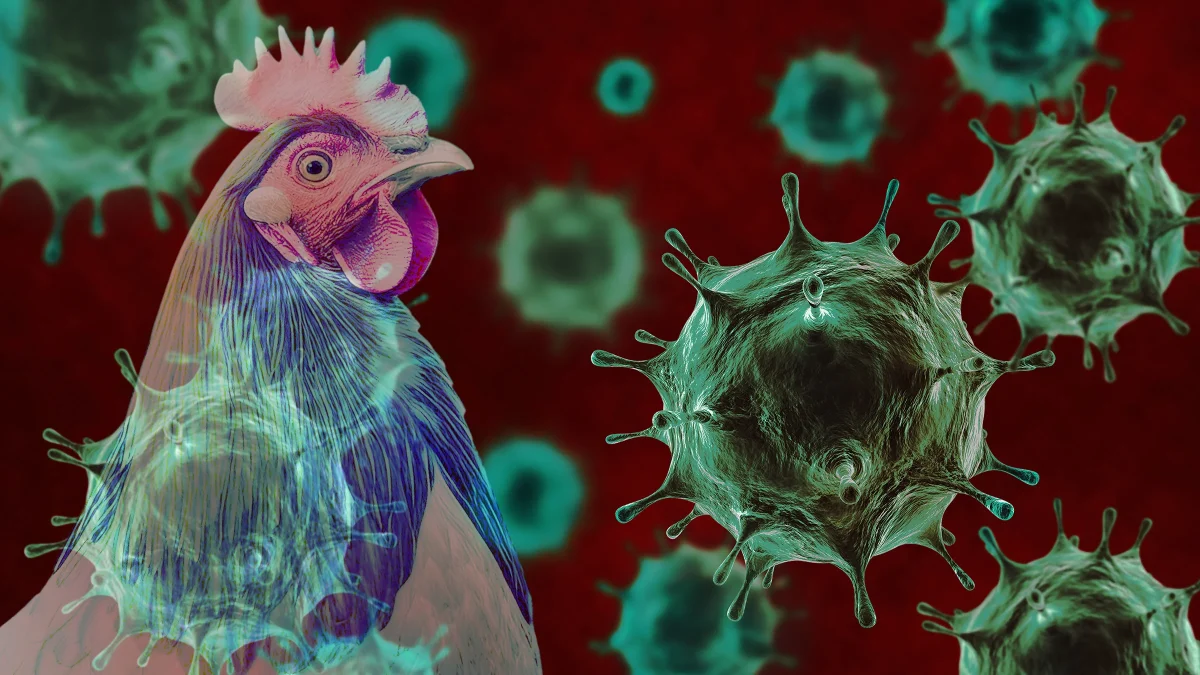Bird flu, otherwise known as the avian flu or H5N1 influenza, is a contagious viral infection that, as the name suggests, mainly affects birds. The virus is commonly found among wild birds, but more recently, with bird flu cases steadily increasing, the virus has spread among farm chickens and turkeys, as well as a variety of other mammals such as cows. Many of these animals get sick because of direct contact with infected wild birds. Once a farm animal is infected, the virus is easily spread among the rest of the animals because of close contact.
Although the first cases of bird flu were officially recognized in the late 1990s in southern China, human infections have remained rare for the past three decades. With the virus sporadically experiencing a resurgence in various parts of the world, most countries have practiced animal culling and other measures to prevent the spread of the virus on farms. During the past year, however, the United States has experienced an alarming increase in bird flu not only among birds and poultry but also among cows and other farm animals, with 70 cases showing up in humans. Most infected people have been workers on farms who were in contact with infected animals but recently, there have been a handful of cases where a direct connection to an infected animal or person could not be established. So, what does this mean for us as a society?
On the one hand, it is easy to read the new developments regarding bird flu and start to panic. After all, we are all just recovering from the shock of a global pandemic that started as just another flu: the COVID-19 pandemic. On the other hand, during the last few decades, we have all heard plenty of news stories about viruses such as Zika, West Nile, and MERS, which had the potential to become widespread, but they thankfully never did.
The recent spread of bird flu has become worrisome because of its spread across regions but, more importantly, across species, with the number of human infections growing in the past year to the highest it has ever been. What is most concerning has been the cases of people who have tested positive for bird flu without any contact with birds or any sick animals. While most of these cases have been mild and patients have recovered, a teenager in British Columbia remains critically ill. All of this means that while still unknown, the virus may have mutated enough to move from human to human rather than being limited to animals. This may result in a rapid spread of the virus and may also provide opportunities for the bird flu to merge with other flu strains and mutate.
While this is not good news, it is important to note that human cases of bird flu are still rare, and those infected have mainly suffered from a mild form of the flu, with only one official death recorded. Additionally, there is a lot we and our government can do to prevent and limit the spread of the virus. For instance, more testing, providing more information to people and healthcare workers, and research can be very effective methods in our fight against this virus, as would avoiding direct contact with birds or any potentially infected animals. Recently, a new strain of bird flu has been detected at a duck farm in California, with potential for spreading and unknown potential impact on humans. While a vaccine for bird flu already exists, the supply is very limited, and if the government decides to fund more research and production of the vaccine, that might help change the trajectory of the virus. Until we know more about this disease, it is always important to take care of your health and see a doctor if you are facing any severe flu-like symptoms.













